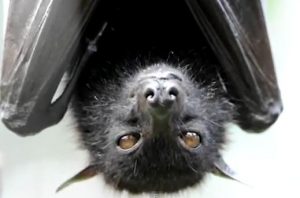Since its discovery in 1999, Nipah virus has been reported almost yearly in Southeast Asia, with Bangladesh and India being the hardest hit. In a new study, published today in PLoS Neglected Tropical Diseases, scientists used machine learning to identify bat species with the potential to host Nipah virus, with a focus on India – the site of a 2018 outbreak. Four new bat species were flagged as surveillance priorities.

Image/Video Screen Shot
Barbara Han, a disease ecologist at Cary Institute of Ecosystem Studies, is a co-lead author on the paper. She explains, “While there is a growing understanding that bats play a role in the transmission of Nipah virus in Southeast Asia, less is known about which species pose the most risk. Our goal was to help pinpoint additional species with a high likelihood of carrying Nipah, to target surveillance and protect public health.”
Raina K. Plowright, a disease ecologist at Montana State University, was also a co-lead author. She notes, “As this paper was going to press, another case of Nipah virus was confirmed in Kerala. The public health community has again been forced into reactive mode. Our study is a starting point for the research needed to contain Nipah at its source, so we are managing spillover risk, instead of human suffering.”
Read more at Cary Institute of Ecosystem Studies
- Legionnaires’ Disease Outbreak at Advocate Christ Medical Center
- California reports increasing West Nile Virus activity, Issues warning
- Pakistan: 11th human rabies death reported in Karachi
- HIV outbreak declared in Thunder Bay, Ontario
- Hand, Foot & Mouth Disease: Emergex Signs an R&D Agreement with IMCB to Develop a Vaccine
- Pasco County, FL issues ‘crypto’ warning
- West Nile virus in the US: 20 years ago in NYC


